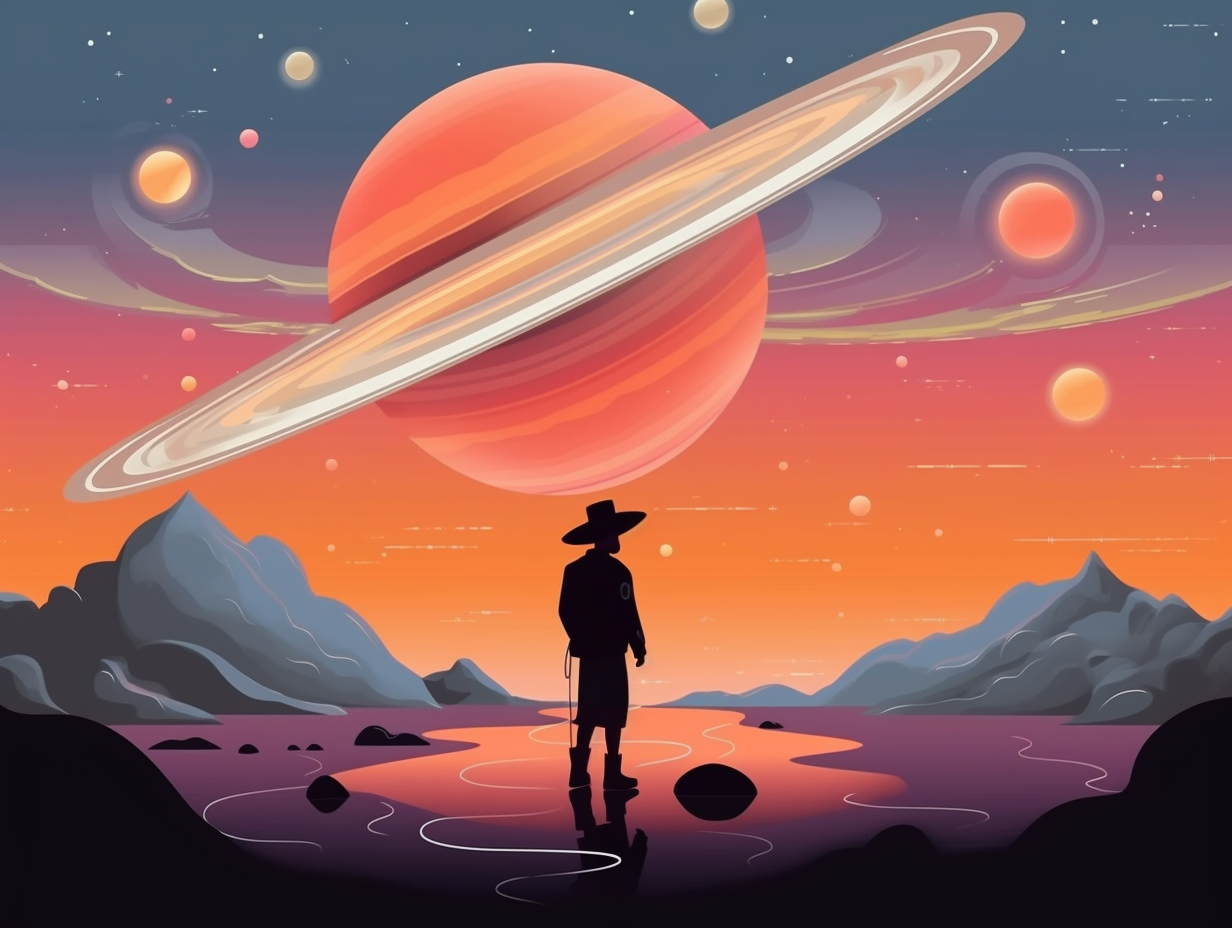Discover the Stars: 13 Amazing Fun Facts About the Cancer Constellation You'll Love to Share

1. Karkinos: Crab-turned-Constellation
Before zodiac signs were a thing, even crabs couldn’t resist the urge to pinch, poke, and meddle in a good ol’ mythical brawl: Cancer constellation was actually inspired by Karkinos, a giant crab in Greek mythology, who valiantly joined the clash between the Hydra and Herakles at Lerna. Its efforts didn't end well, but Karkinos earned a heavenly reward from the goddess Hera, who immortalized the crustacean as the constellation Cancer, forever shining down on wandering gazes from the night sky.
Source => theoi.com
2. Al Tarf: The Dim Star
When you thought the end couldn't get any dimmer, enter Al Tarf, stage right: Known as Beta Cancri, the Cancer constellation features its own obscure star called Al Tarf, or "the end" in Arabic, which modestly marks the finale of one of our celestial crab's legs with a barely perceptible magnitude of 3.6.
Source => britannica.com

Discover the celestial love stories and moral lessons behind the constellations, as told by Artemis, the goddess of the hunt! 💫🏹😍
=> Fun Facts about Constellations
3. Cancer's Celestial Apiary
If the stars had their very own apiary, it would undoubtedly be found in the constellation of Cancer: This celestial crab is home to two Messier objects, including M44, the Beehive Cluster, which is a buzzing assembly of stars that resemble a swarm of bees, and M67, another open star cluster.
Source => space.com
4. Buzzworthy Beehive Cluster
Bee-have yourself, this celestial fact is quite the buzz: The Cancer constellation's Beehive Cluster, aka Praesepe or M44, is home to a whopping 1,000 stars, with red giants, white dwarfs, and the (inter)stellar neighborhood's first-ever detected planets orbiting Sun-like stars. Galileo himself scoped out this cosmic beehive, which is still creating quite the galactic buzz to this day.
Source => en.wikipedia.org

5. Star-studded Stellar Neighborhood
Ladies and gentlemen, prepare to enter the buzzing beehive of the galaxy: the Beehive Cluster in the Cancer constellation! Surprisingly, this astronomical apiary isn't home to celestial insects, but instead boasts of nearly 1,000 stars packed together like bees in a hive. Nestled into the bosom of Cancer, this nebulous mass has intrigued star-gazers so far back as Ptolemy, and even served as one of Galileo's first telescope targets. While these stellar swarms may not produce honey, they do share impressive origins and characteristics, the likes of which span from red giants and white dwarfs to mighty main sequence stars.
Source => en.wikipedia.org
6. Cancer's Zodiac Celeb Status
Calling all crustaceans! It's time to come out of your shells and celebrate the celestial crab with its very own stellar abode: Cancer is actually one of the twelve Zodiac constellations that the sun graces on its heavenly journey each year, best visible during the month of March and observable from December through June.
Source => windows2universe.org
7. Ancient Cancer Treatment
In Egyptian times, a cranky old fire drill was the breast tool in town for tumor-tinged troubles: The Edwin Smith Papyrus, dating back to 3000 BC, is the earliest known description of cancer, specifically referring to 8 cases of breast tumors or ulcers treated by cauterization using the fiery tool, sadly noting that no cure was available back then.
Source => news-medical.net
8. Praesepe: Eye-Candy in the Sky
Blink and you'll miss it! This celestial piece of eye candy hides in plain sight and is older than your favorite pair of Levi's from 130 BC: The Cancer Constellation houses the glittering open star cluster called Praesepe, also known as Messier 44, NGC 2632, or simply "Hipparchus' Starry Playground". With over 300 stars stuffed in about 500 light-years from Earth, it's that interstellar sparkle visible to the naked eye west of the connecting line between our good star friends Delta and Gamma Cancri.
Source => star-registration.com
9. Cancer's Bee-like Stars
Prepare to be starstruck: the Cancer constellation shelters a buzzing hive of celestial bees! This ancient sky-dwelling apiary houses a luminous entourage, while a glittering neighborhood nearby holds its own secrets. Balancing on the delicate stinger of humor: Cancer is home to two Messier objects - M44, also known as the Beehive Cluster, containing around 50 bee-like stars; and M67, another open star cluster awaiting further exploration.
Source => space.com

10. The Not-So-Diamond Planet
Here's a gem of a space tale for you: Once upon a time, astronomers thought they discovered a diamond-studded planet, dazzling in the night sky like Marilyn Monroe's best friend. But as with many glitzy fantasies, reality had other sparkling surprises in store: Turns out, 55 Cancri e, which resides in the Cancer constellation, may not be a "diamond world" after all. Instead, it could have a graphite surface with a layer of diamond beneath, and the daytime scorching temperature on this enormous celestial gemstone reaches a sizzling 4,000 degrees Fahrenheit (2,427 degrees Celsius).
Source => space.com
11. Delta Cancrids: Slow-Mo Meteor Shower
Move over, Speed Racer – the Delta Cancrids meteor shower is here to show you how to slow things down: From December to February, you can catch a glimpse of this celestial drizzle, peaking at a leisurely four meteors per hour on January 17th, with its radiant point near Delta Cancri in the Cancer constellation. First spotted in 1872 and confirmed in 1971, this slow-motion spectacle invites us to sit back and enjoy the mystery, as its source remains unknown – but whispers link it to asteroid 2001 YB5. Remember to look up, and take life one meteor at a time!
Source => en.wikipedia.org
12. Cancer's Planetary Playground
What do you get when you cross a big crab in the sky with some celestial real estate? Cancer, the zodiac's faintest constellation, and a playground for planetary discoveries: Boasting two stars with known planets, the primary star in the 55 Cancri system is the proud parent to five confirmed little orbs, while Beta Cancri, the brightest star in the constellation, hangs out with a companion star just 29 arc seconds away. Talk about a celestial community!
Source => constellation-guide.com
13. Cancer Moon Sign: Emotional Detectives
Did you hear about the Cancers who moonlight as emotional detectives? They can sense when something's fishy in the emotional seas of their loved ones and relatives, but sometimes have trouble untangling the mysteries of their own feelings. Beware, though - their soft shells can be easily cracked by sketchy characters if they aren't careful: The Cancer moon sign is strongly connected to emotions and is particularly devoted to relationships, valuing the bonds of family and friends as sources of security. This sensitivity allows them to understand the deeper forces at play in daily interactions but must learn to discern their emotions from others to avoid being exploited.
Source => lovetoknow.com
Related Fun Facts




















